30 Houseplants That Thrive In Direct Sunlight With Growing Advice From Jane Perrone

Reviewed By COLIN SKELLY

Colin is a Horticulturist and Horticultural Consultant with experience in a range of practical and managerial roles across heritage, commercial and public horticulture. He holds the Royal Horticultural Society’s Master of Horticulture award and has a particular interest in horticultural ecology and naturalistic planting for habitat and climate resilience.
Contributions From SARAH GERRARD-JONES

Known online as 'The Plant Rescuer' and having published a book with the same name, Sarah is a houseplant enthusiast with a passion and skill for reviving imperfect plants. She has an online following of almost 300,000 people and won a Gold Medal at the 2022 RHS Chelsea Flower Show.

Jane Perrone is a Journalist turned Houseplant Expert who has over 25 years of experience. Jane published a book on Houseplants at the start of 2023 and is the founder of On The Ledge podcast, with more than 250 episodes to date. She is a member of the RHS Advisory Committee on Houseplants.
IN THIS GUIDE
- 1) Aeonium
- 2) Aloe Vera
- 3) Avocado
- 4) Basil
- 5) Bird Of Paradise
- 6) Croton
- 7) Crown Of Thorns
- 8) Desert Rose
- 9) Donkey’s Tail
- 10) Dragon Tree
- 11) Dwarf Umbrella Tree
- 12) Mexican Snow Ball
- 13) Fiddle-Leaf Fig
- 14) Cape Jasmine
- 15) Geranium
- 16) Golden Barrel Cactus
- 17) Hens And Chicks
- 18) Hibiscus
- 19) Jade Plant
- 20) Jasmine
- 21) Kalanchoe
- 22) Kumquat Tree
- 23) Chinese Money Tree
- 24) Moon Cactus
- 25) Nivosa Cactus
- 26) Papyrus
- 27) Ponytail Palm
- 28) Sago Palm
- 29) String Of Pearls
- 30) Yucca
- References
When selecting houseplants to brighten up your home, aesthetics should only form part of your decision-making process.
Another factor is the amount of natural light the space receives and which plants are capable of coping with those conditions.
“In my experience, most houseplant issues are due to a lack of light,” shares Sarah Gerrard-Jones, The Plant Rescuer.
“Get the lighting right and your plant stands a much better chance of survival. Just because we think a room looks bright, it doesn’t necessarily mean that it is providing your plant with lots of bright light.
“Position your plants close enough to a window so that they can sense the light.”
If you’re lucky enough to live in a particularly sunny location, you may find that many houseplants have wilted on you in the past.
However, that doesn’t mean that all is lost, since there are plenty of varieties which do well in direct sunshine.
“A lot of cacti and succulents will be happy in as much sun as you can give them indoors and they are fine if the air in a room is dry,” shares Jane Perrone, a Houseplant Expert.
“A lot of them do need a cooler, drier period in winter, so be aware of that when the central heating is on in the cooler months.
“The more light you can give them, the better.”
Here are some of my personal favourites below:
1) Aeonium
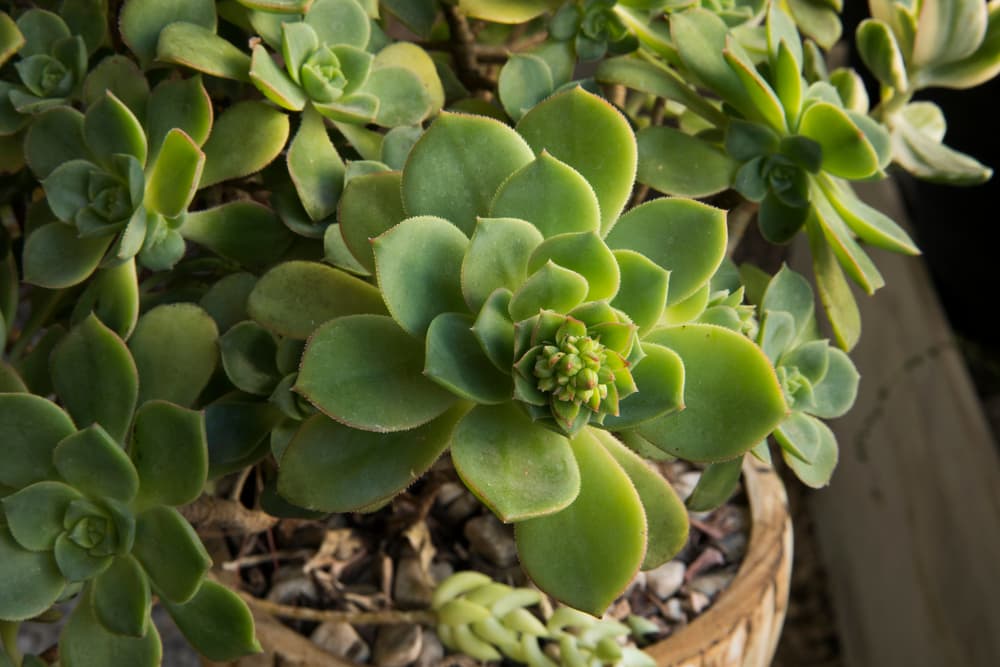
- BOTANICAL NAME: Aeonium arboreum
- FOLIAGE TYPE: evergreen
- FLOWERS: yellow
- FLOWERING SEASON(S): spring
- SOIL PREFERENCE: loam or sand; any pH
Not only does aeonium achieve the impressive feat of squeezing all five vowels into a seven-letter word, but it also, unusually for succulents, can exceed 90cm in height.
“There are Aeonium that grow to 1m or more height and width and those that grow no more than 15-20cm,” shares Master Horticulturist Colin Skelly.
“In the height of summer, they may close their rosettes and enter dormancy.
“They will re-enter active growth in autumn but you can prevent dormancy by providing some shading on the hottest summer days.
“Although drought tolerant, they may also enter dormancy if they dry out in summer.”
The small yellow blooms are a nice touch, but it’s the rosettes of waxy, fleshy foliage that are the real draw here.
2) Aloe Vera
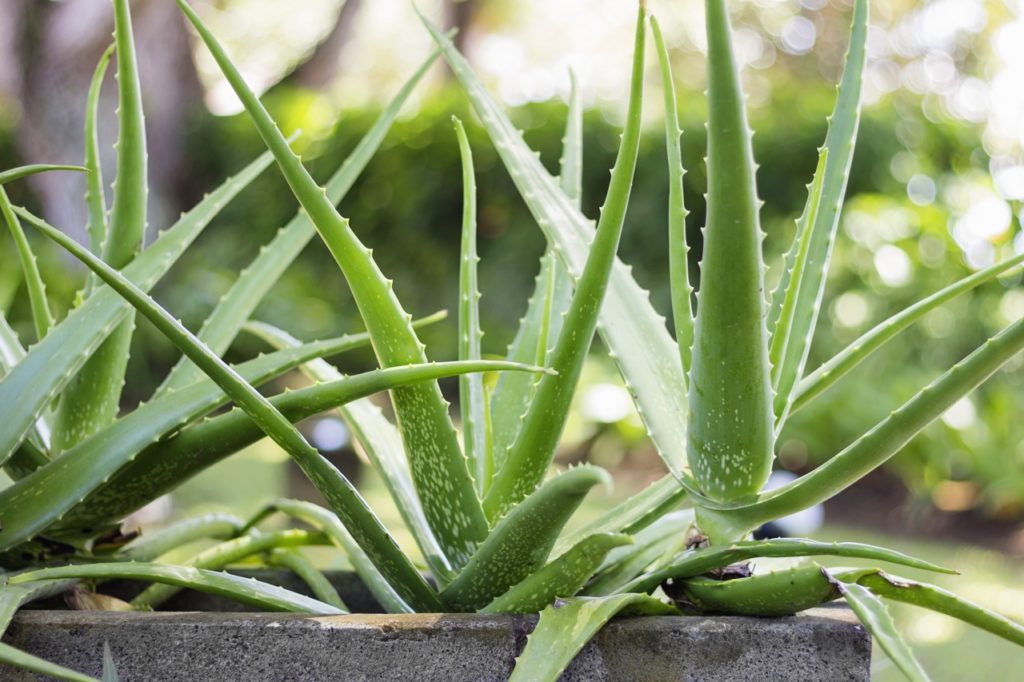
- BOTANICAL NAME: Aloe vera
- FOLIAGE TYPE: evergreen
- FLOWERS: green and yellow
- FLOWERING SEASON(S): summer
- SOIL PREFERENCE: loam or sand; any pH
Natives of the desert, it’s no surprise that Aloe vera can’t get enough of that heat.
Bring some of those sultry vibes into your home with this cheerful little plant, which can easily be propagated through the plentiful pups they produce.
In my experience, while they can cope with direct sunlight for most of the year, you do need to watch them in summer as their leaves can begin to scorch in very strong sunlight.
Move them into a more shaded spot if you start to find the fleshy leaves of your aloe turning red.
3) Avocado
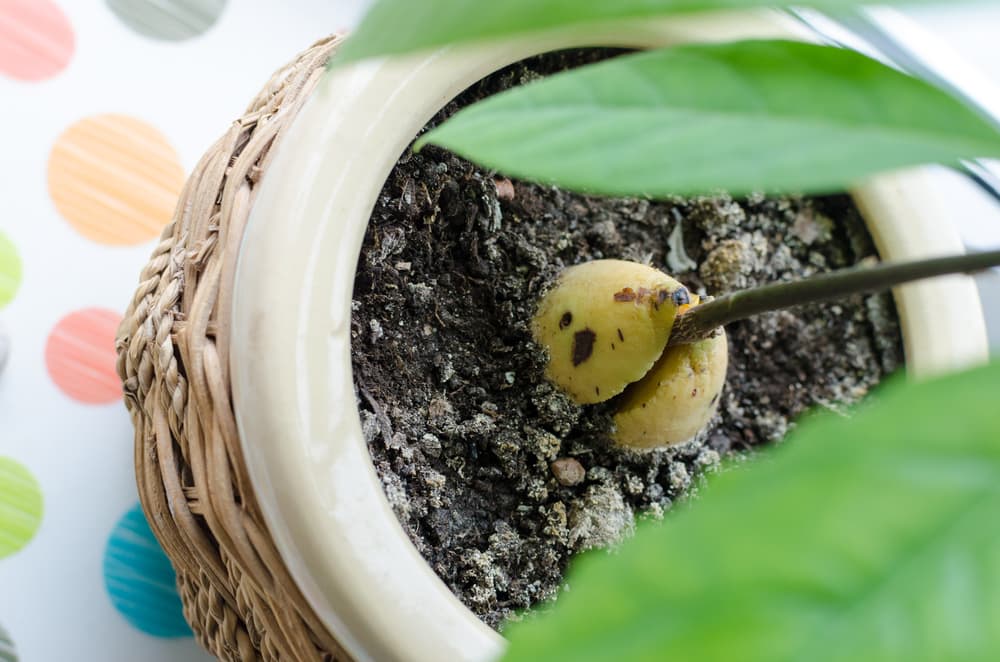
- BOTANICAL NAME: Persea americana
- FOLIAGE TYPE: evergreen
- FLOWERS: green
- FLOWERING SEASON(S): summer
- SOIL PREFERENCE: loam; neutral pH
Avocado plants are surprisingly easy to cultivate from a pit in a cup of water, as I found out to my delight during a lockdown project.
While it would be quite optimistic to expect fruit from a homegrown variety, you will be able to coax lush vegetation from this pleasing houseplant with the minimum of fuss.
4) Basil

- BOTANICAL NAME: Ocimum basilicum
- FOLIAGE TYPE: deciduous
- FLOWERS: white and pink
- FLOWERING SEASON(S): summer
- SOIL PREFERENCE: loam or sand; any pH
One edible plant that is far from just ornamental is basil.
A highly versatile herb, it’s great for adding flavour and colour to salads, soups, pizzas, pasta sauces and more.
It’ll also exude an intoxicating aroma in any environment, so make sure you have a plentiful supply on your kitchen windowsill.
5) Bird Of Paradise
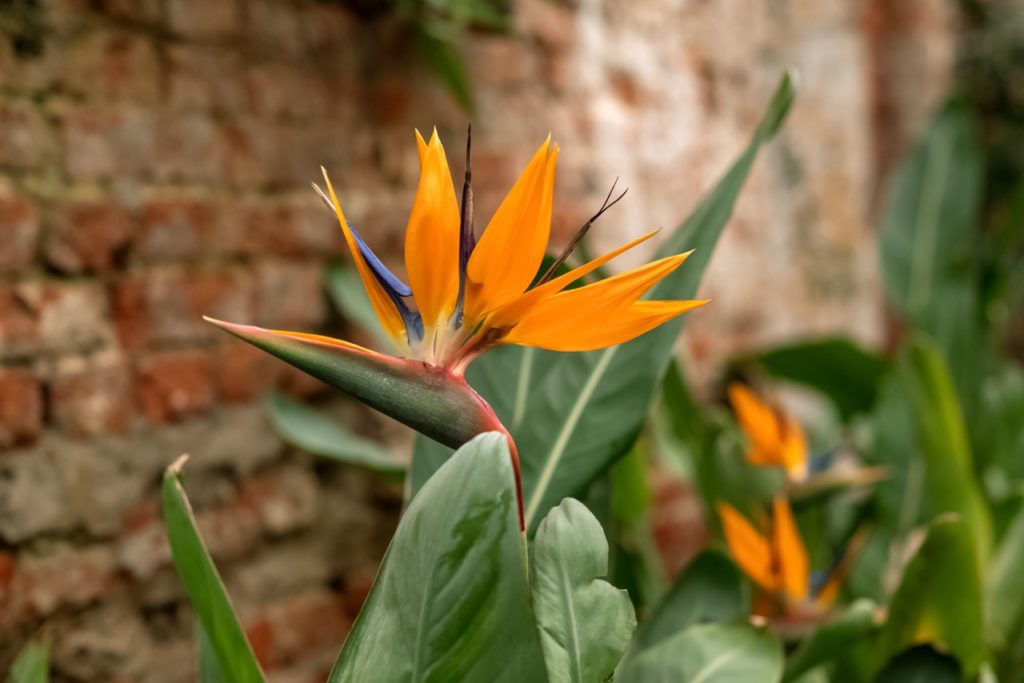
- BOTANICAL NAME: Strelitzia
- FOLIAGE TYPE: evergreen
- FLOWERS: orange, blue and yellow
- FLOWERING SEASON(S): spring
- SOIL PREFERENCE: chalk, loam, sand; any pH
One of the most spectacular plants on this list and indeed in the entire botanical kingdom, the bird of paradise plant is so named for the flowers which resemble the crest of its avian namesake.
It won’t produce those famous flowers without sufficient sunlight, however, so find a south-facing window for this beauty.
In the UK, you may need to wait a significant number of years for it to flower spontaneously.
In fact, some wait many years only for it never to happen – but it is truly a sight to behold (and worth the wait!) when it does take place.
6) Croton
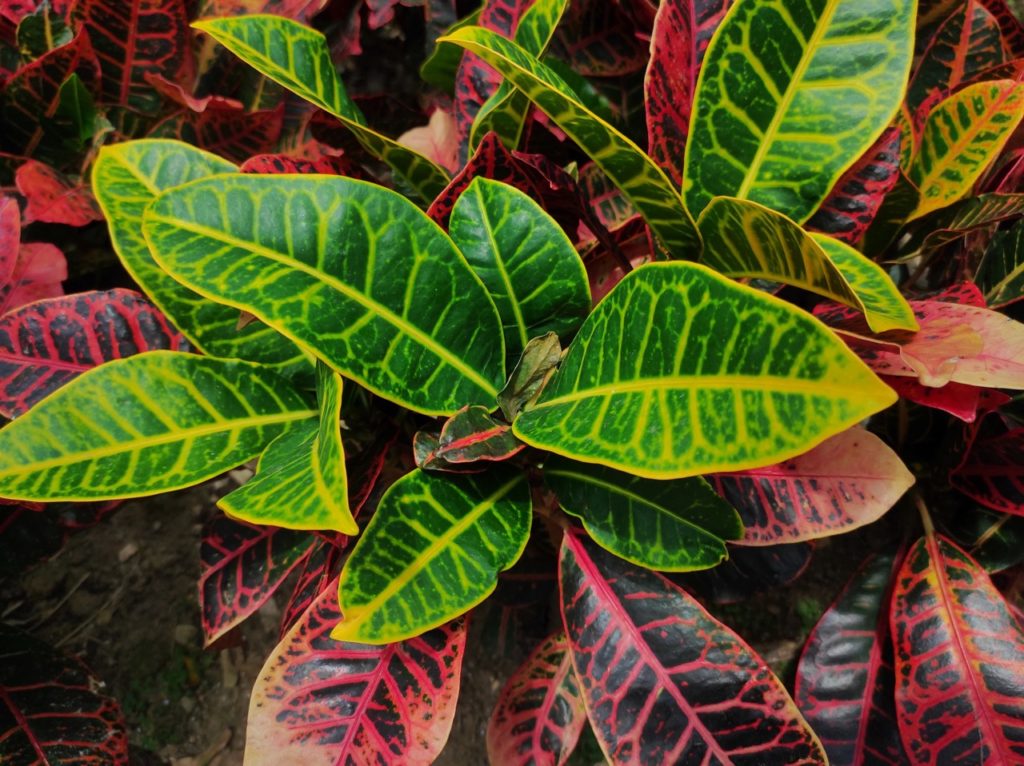
- BOTANICAL NAME: Codiaeum
- FOLIAGE TYPE: evergreen
- FLOWERS: white
- FLOWERING SEASON(S): summer
- SOIL PREFERENCE: loam; any pH
This colourful sun-lover always puts me in mind of prehistoric climes such as those featured in Jurassic Park or similar films.
The variegated patterns of its leaves, alongside the myriad of unusual colours which adorn them, make it a great option for adding intrigue to any sunny corner.
7) Crown Of Thorns
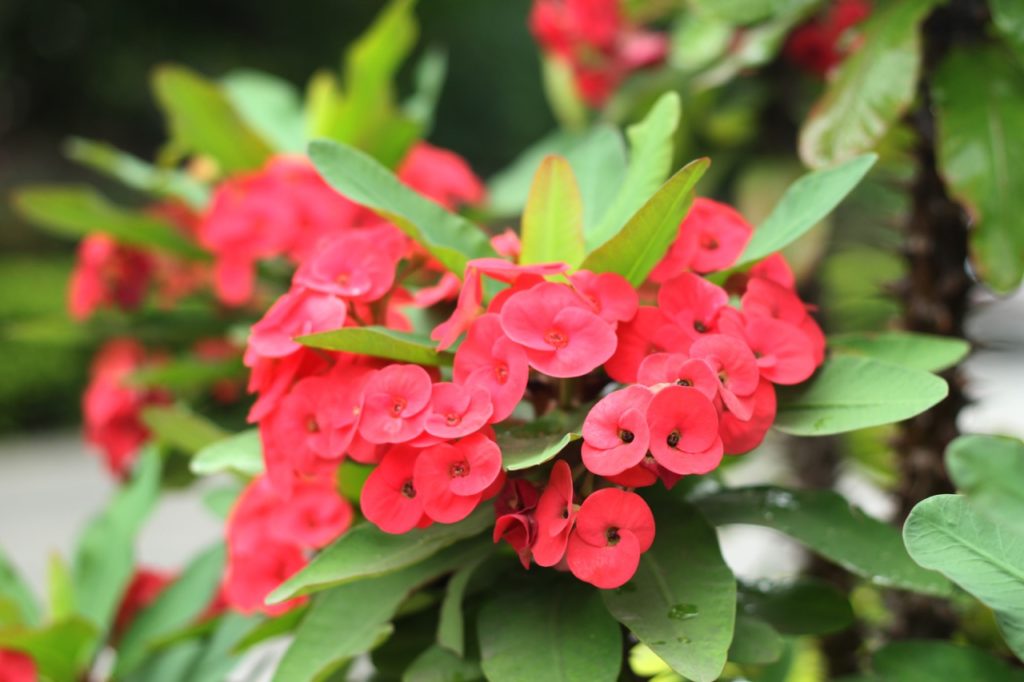
- BOTANICAL NAME: Euphorbia milii
- FOLIAGE TYPE: evergreen
- FLOWERS: yellow and red
- FLOWERING SEASON(S): summer
- SOIL PREFERENCE: chalk, loam, sand; any pH
These succulents are so named for their sharp, spiny stems.1Sutton, C. (2019, April 20). Real story of Christ’s crown of thorns. News.com. Retrieved March 17, 2023, from https://www.news.com.au/lifestyle/real-life/news-life/the-real-story-of-jesus-christs-crown-of-thorns/news-story/ec56fd4a5016c533aabcc08e8bcdd72d
Despite that, their real attractions lie in the tiny clusters of yellow blossoms which are almost invisible against the backdrop of blood-red bracts that last almost all year round.
“Euphorbias really love as much sun as you can give them and are great for a sunny spot,” says Jane.
8) Desert Rose

- BOTANICAL NAME: Adenium obesum
- FOLIAGE TYPE: deciduous
- FLOWERS: pink, white and red
- FLOWERING SEASON(S): summer
- SOIL PREFERENCE: loam or sand; alkaline to neutral pH
The desert rose is another succulent, which may come as a surprise to many people due to the fact that it has no spines or thorns and its leaves are not fleshy like many of its brethren.
Instead, water is stored in the bulbous trunk, somewhat reminiscent of a bonsai tree, while the trumpet-shaped red blooms catch the eye.
9) Donkey’s Tail
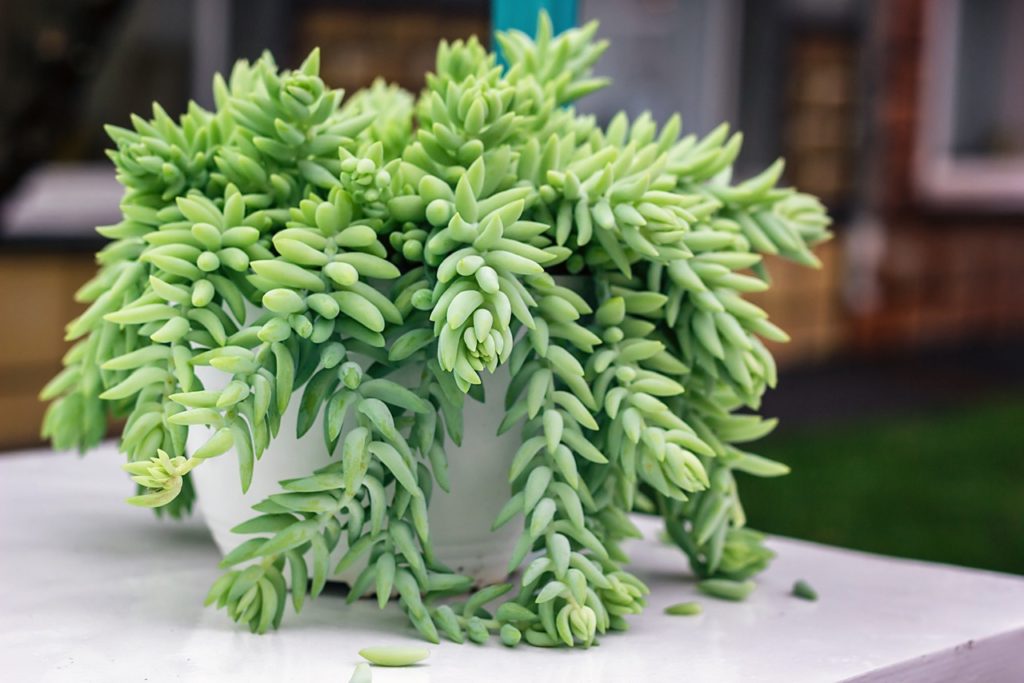
- BOTANICAL NAME: Sedum morganianum
- FOLIAGE TYPE: evergreen
- FLOWERS: purple
- FLOWERING SEASON(S): spring / summer
- SOIL PREFERENCE: loam or sand; any pH
Variously known as donkey’s tail, burro’s tail and horse’s tail depending on which part of the world you live in, this sedum has masses of fleshy leaves which swell with water and resemble a quadruped appendage.
They can become quite weighty when full, so choose a sturdy pot to house them.
10) Dragon Tree

- BOTANICAL NAME: Dracaena marginata
- FOLIAGE TYPE: evergreen
- FLOWERS: white and green
- FLOWERING SEASON(S): summer
- FRUIT SEASON(S): autumn
- SOIL PREFERENCE: all soil types; any pH
Despite its fearsome name, this statement plant is more fashionable than formidable.
However, it can reach an impressive height of over 2m if allowed to stretch its roots, so consider that when repotting.
Other than keeping the soil moist and feeding it biannually, it’ll do well enough on its own.
11) Dwarf Umbrella Tree
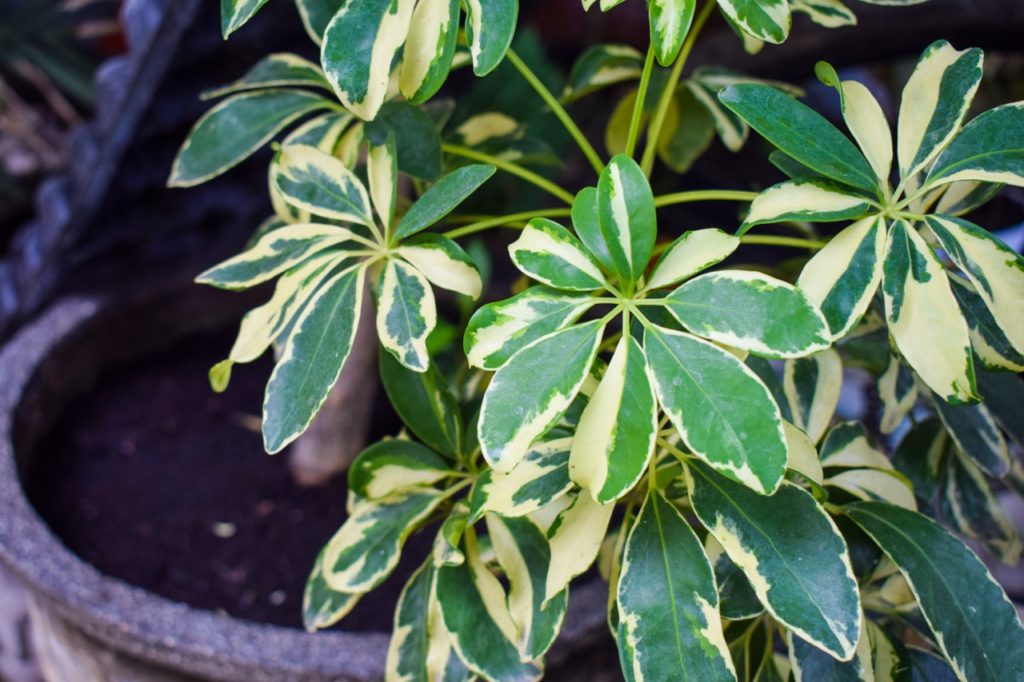
- BOTANICAL NAME: Schefflera arboricola
- FOLIAGE TYPE: evergreen
- SOIL PREFERENCE: loam or sand; any pH
The dwarf variety of this Schefflera is perfect for placing in a sunny spot in your home to add some architectural interest and vibrant greenery to a room.
While it will thrive in direct sunlight, too much of a good thing can turn its leaves brown, so keep an eye on its development.
12) Mexican Snow Ball
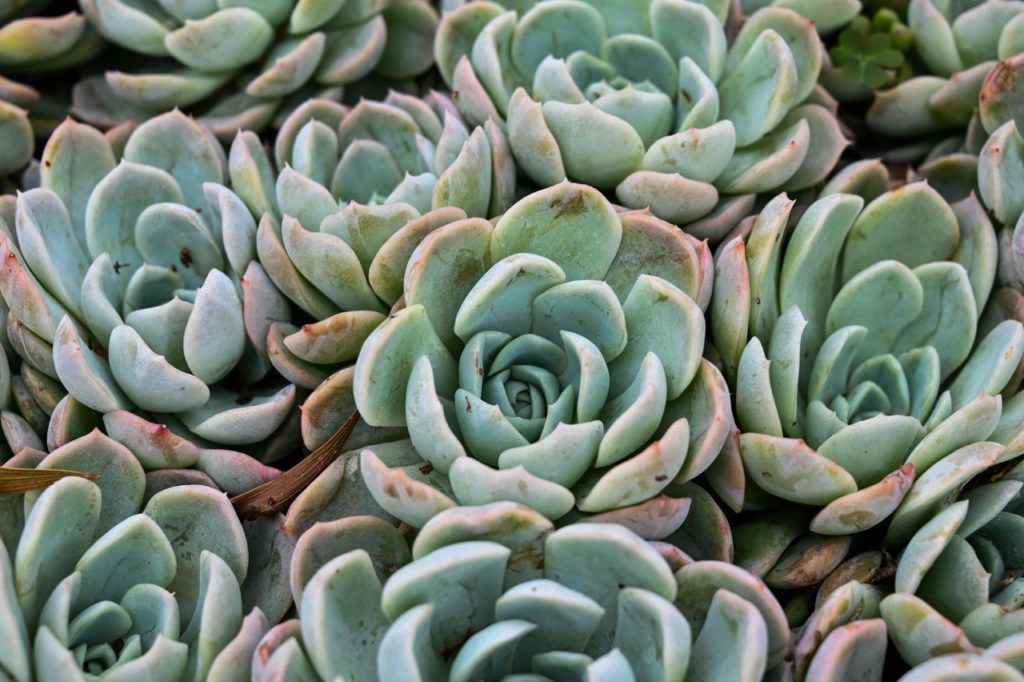
- BOTANICAL NAME: Echeveria albicans
- FOLIAGE TYPE: evergreen
- FLOWERS: pink and yellow
- FLOWERING SEASON(S): winter / spring
- SOIL PREFERENCE: loam or sand; any pH
This happy little succulent comes in a variety of shades, from green to grey to even blue and purple.
For that reason, it’s become a hugely trendy hit on social media – and there’s no denying its aesthetic attributes, especially if it’s treated to adequate sunlight.
13) Fiddle-Leaf Fig
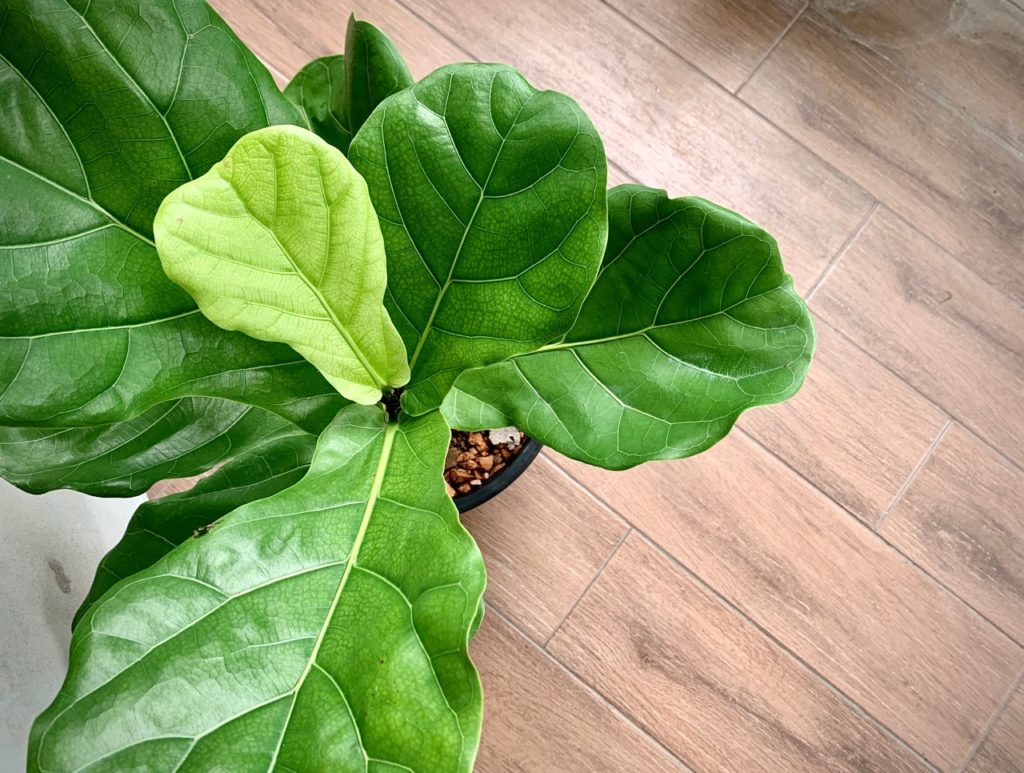
- BOTANICAL NAME: Ficus lyrata
- FOLIAGE TYPE: evergreen
- SOIL PREFERENCE: all soil types; any pH
The oversized leaves and tall stature (around 1.8m) are what immediately capture the attention of this attractive tree, but that’s nothing compared to the 20m height it can reach in the wild.
It is more demanding than some other options on this list, but you’ll be pleasantly rewarded for your efforts.
14) Cape Jasmine
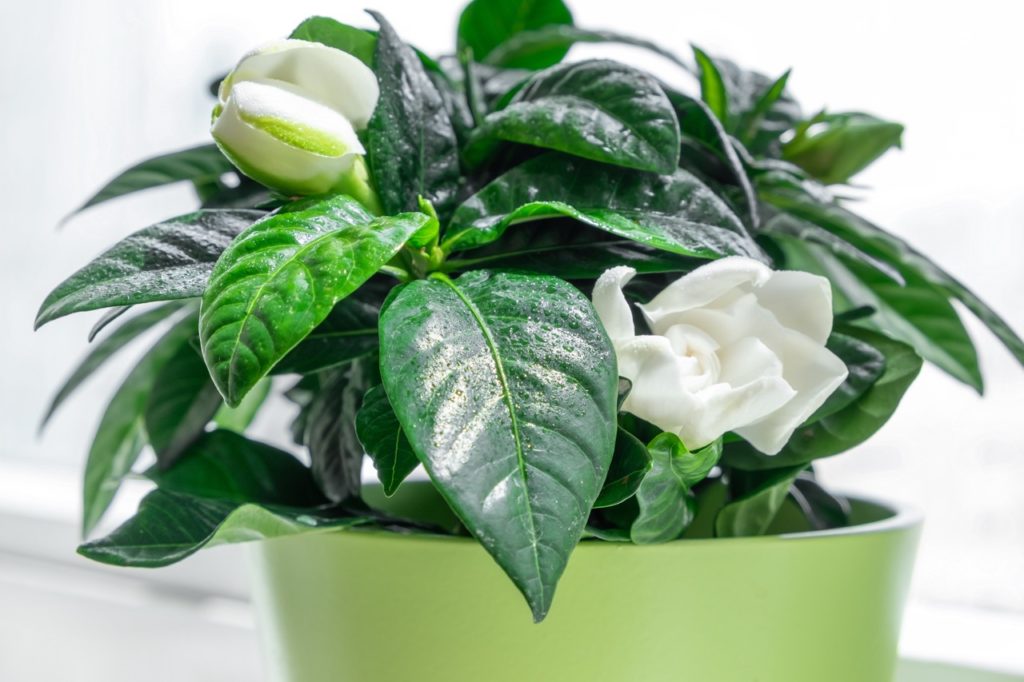
- BOTANICAL NAME: Gardenia jasminoides
- FOLIAGE TYPE: evergreen
- FLOWERS: white
- FLOWERING SEASON(S): summer / autumn
- SOIL PREFERENCE: clay, loam, sand; acidic to neutral pH
Despite its name, gardenia will do just fine indoors and, in fact, its subtropical origins mean that an interior setting is actually preferable in many parts of the UK.
The large glossy leaves are complemented by stunning white blossoms, so it’s no surprise it’s increasingly popular with homeowners today.
15) Geranium
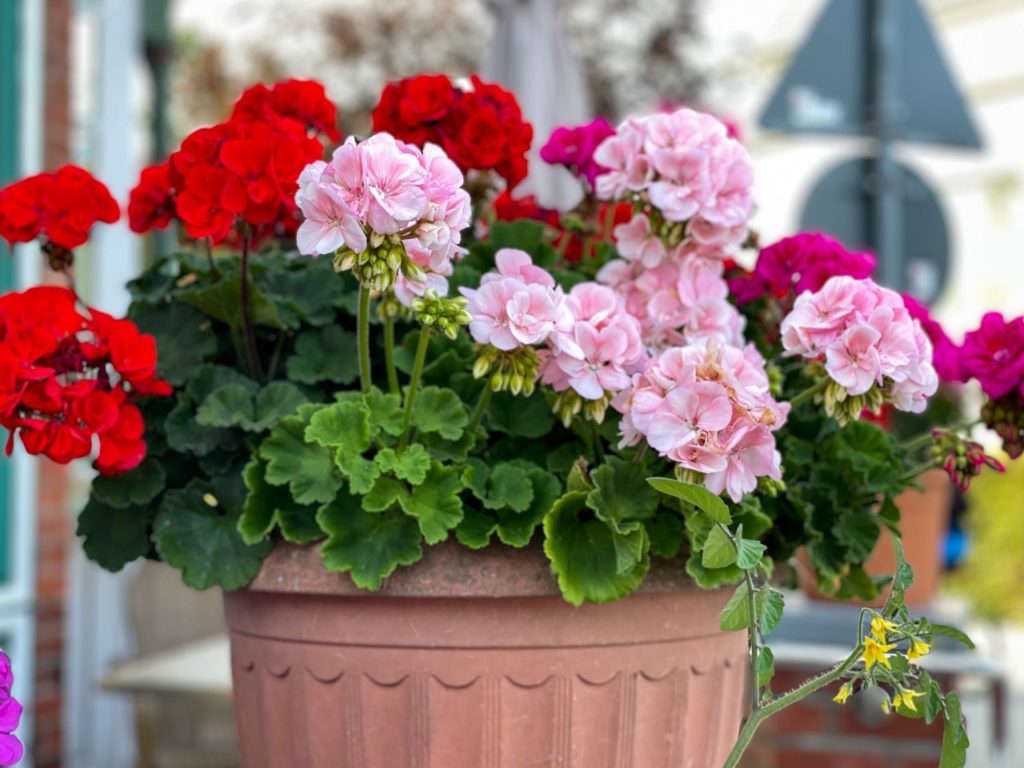
- BOTANICAL NAME: Pelargonium
- FOLIAGE TYPE: evergreen
- FLOWERS: varies
- FLOWERING SEASON(S): summer
- SOIL PREFERENCE: chalk, loam, sand; alkaline to neutral pH
Geraniums are available in a wide variety of colours, all of which bring vibrancy and joie de vivre to any location.
That includes al fresco spots in the summer, so feel free to move your potted geraniums outside.
16) Golden Barrel Cactus
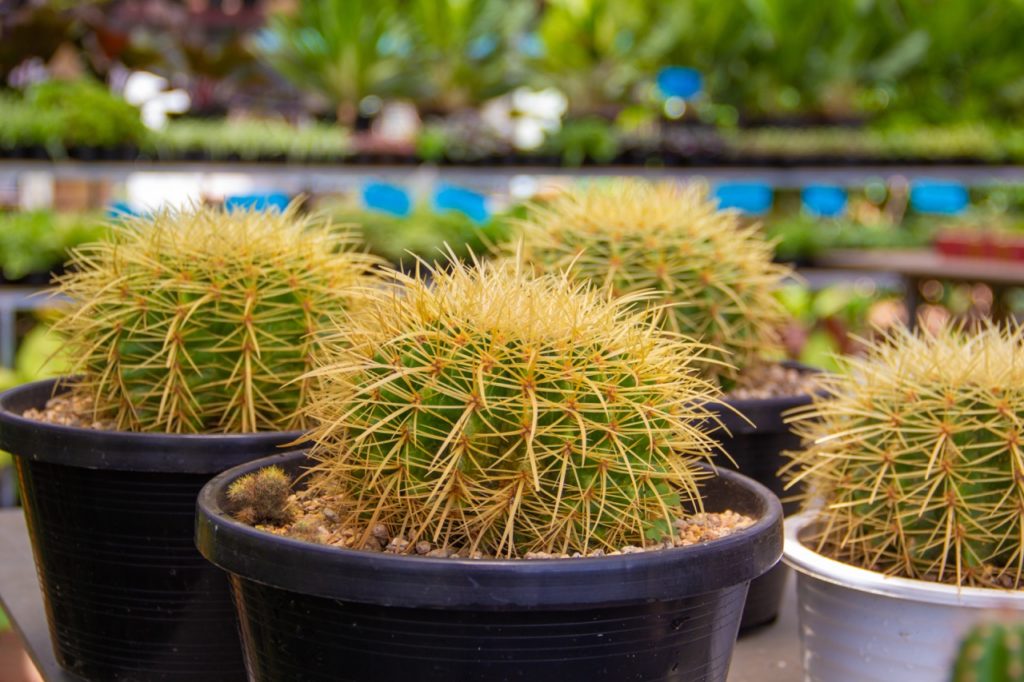
- BOTANICAL NAME: Echinocactus grusonii
- FOLIAGE TYPE: evergreen
- FLOWERS: yellow
- FLOWERING SEASON(S): summer
- SOIL PREFERENCE: loam or sand; any pH
Faintly resembling a spiky pin-cushion, the golden barrel is your quintessential cactus.
That means it requires very little in the way of water, it doesn’t play nice when you accidentally touch it and yes, it will happily absorb all of the sunlight you can throw at it.
17) Hens And Chicks
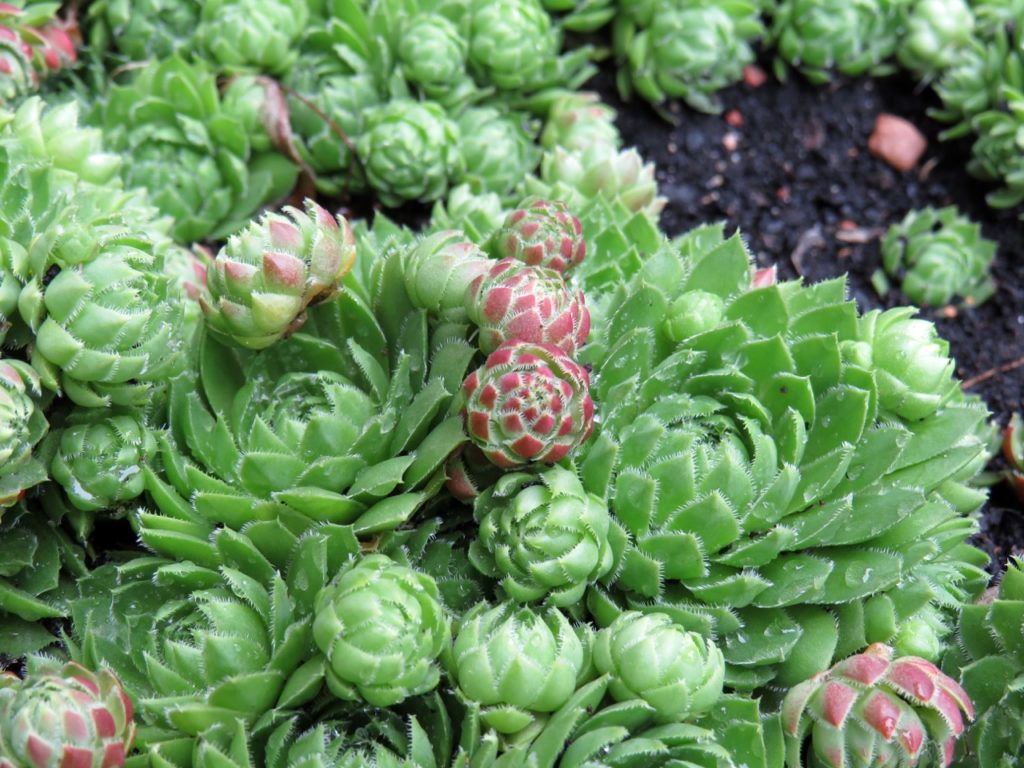
- BOTANICAL NAME: Sempervivum soboliferum
- FOLIAGE TYPE: evergreen
- FLOWERS: green and yellow
- FLOWERING SEASON(S): summer
- SOIL PREFERENCE: all soil types; any pH
This mat-forming succulent is so named for the ease with which it self-propagates; over the space of a couple of years, it can form colonies that spread over 50cm in length.
The ‘hen’ is the main central rosette, while the multiple offspring (‘pups’) sprouting from its vicinity are the ‘chicks’.
18) Hibiscus
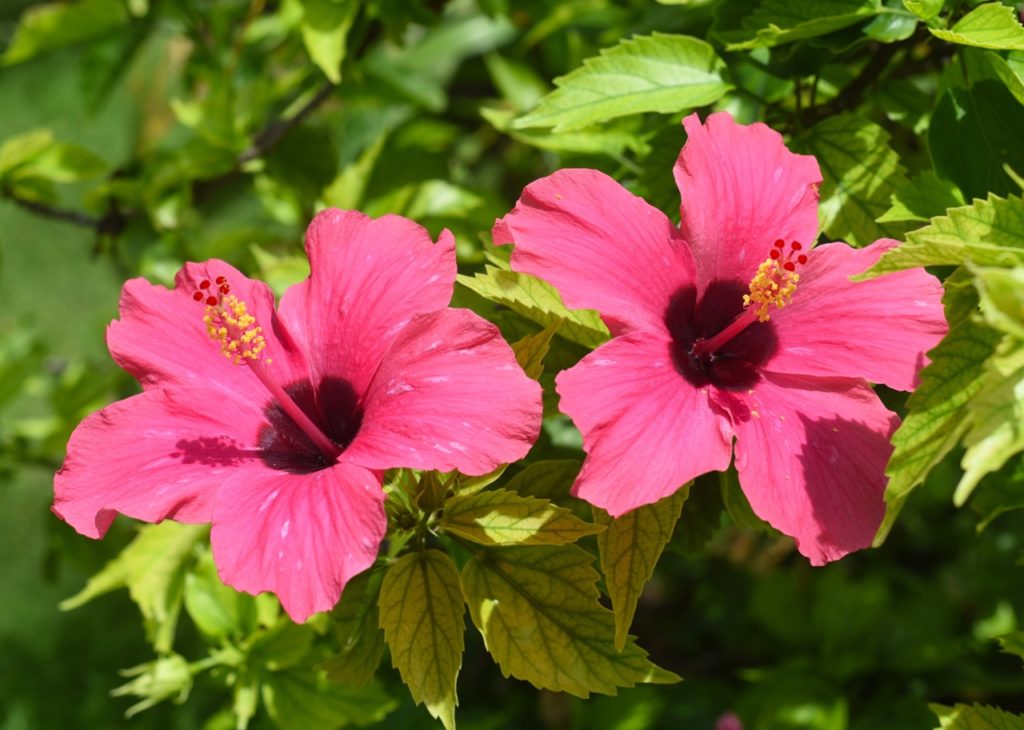
- BOTANICAL NAME: Hibiscus rosa-sinensis
- FOLIAGE TYPE: deciduous
- FLOWERS: varies
- FLOWERING SEASON(S): summer / autumn
- SOIL PREFERENCE: all soil types; neutral to alkaline pH
These tropical lovelies have some varieties with flower heads almost 25cm in diameter!
While you might not be (and I personally haven’t been) able to lay your hands on a specimen of that size, whichever one you do manage to find will bring vibrancy, energy and a pleasant smell to your home.
19) Jade Plant

- BOTANICAL NAME: Crassula ovata
- FOLIAGE TYPE: evergreen
- FLOWERS: pink and white
- FLOWERING SEASON(S): summer
- SOIL PREFERENCE: loam and sand; any pH
In many Asian cultures, Jade plants are thought of as a sign of luck and prosperity, so fill your house with them to encourage financial success.
Even if you don’t end up quids in, you’ll have a home full of beautiful and easy-to-maintain greenery.
Jade plants range in size from smaller options all the way up to full-size trees.
20) Jasmine
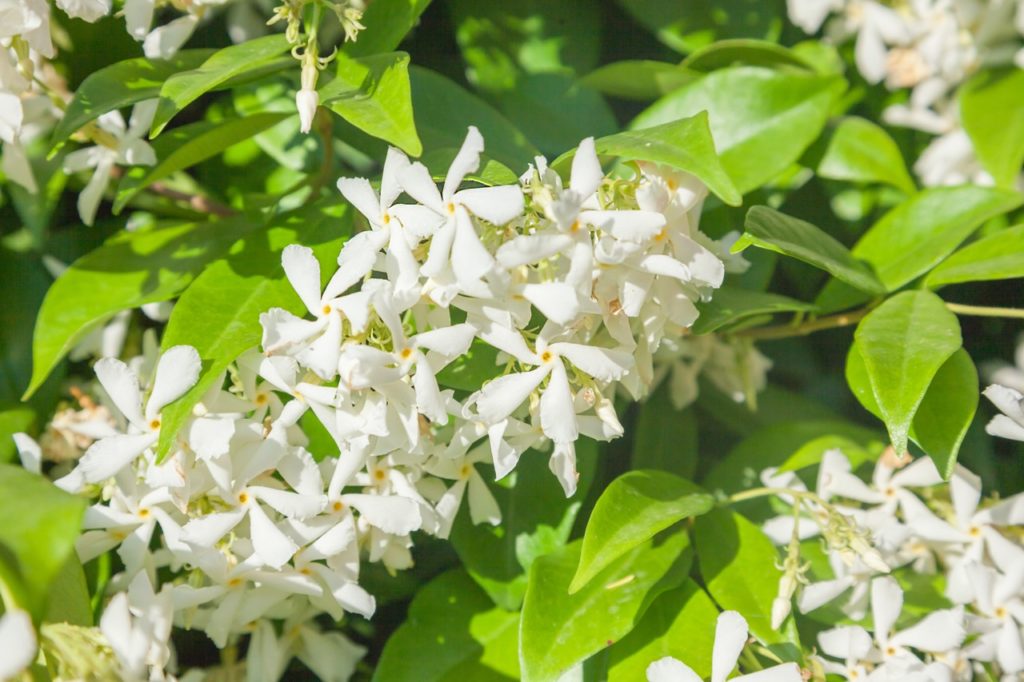
- BOTANICAL NAME: Trachelospermum jasminoides
- FOLIAGE TYPE: evergreen
- FLOWERS: white
- FLOWERING SEASON(S): summer
- SOIL PREFERENCE: chalk, loam, sand; any pH
Jasmine bears a striking resemblance to gardenia, but while the latter is a shrub, jasmine prefers to climb.
Situate it near a trellis or other support structure and let it fill your room with its intoxicating perfume, but just make sure it has enough sunlight to keep it happy.
21) Kalanchoe
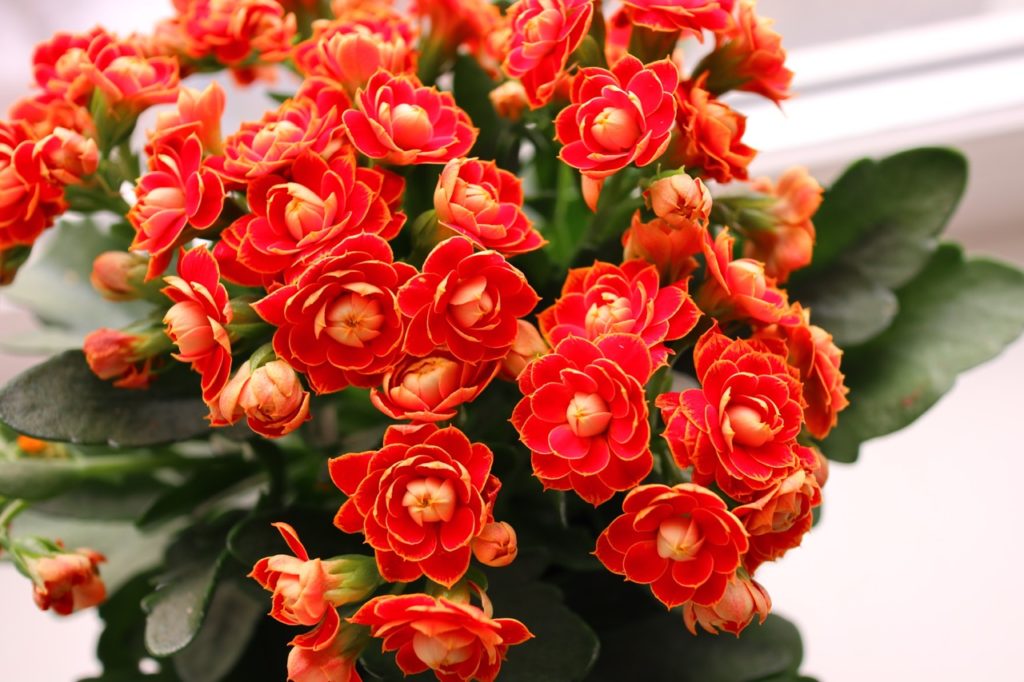
- BOTANICAL NAME: Kalanchoe blossfeldiana
- FOLIAGE TYPE: evergreen
- FLOWERS: red
- FLOWERING SEASON(S): spring
- SOIL PREFERENCE: loam or sand; any pH
There are over 100 different species which fall under the kalanchoe umbrella, but only a handful of them are cultivated in the UK.
Like most succulents, it is a little demanding, though it will appreciate full sun and indeed will not flower to its full potential without it.
22) Kumquat Tree
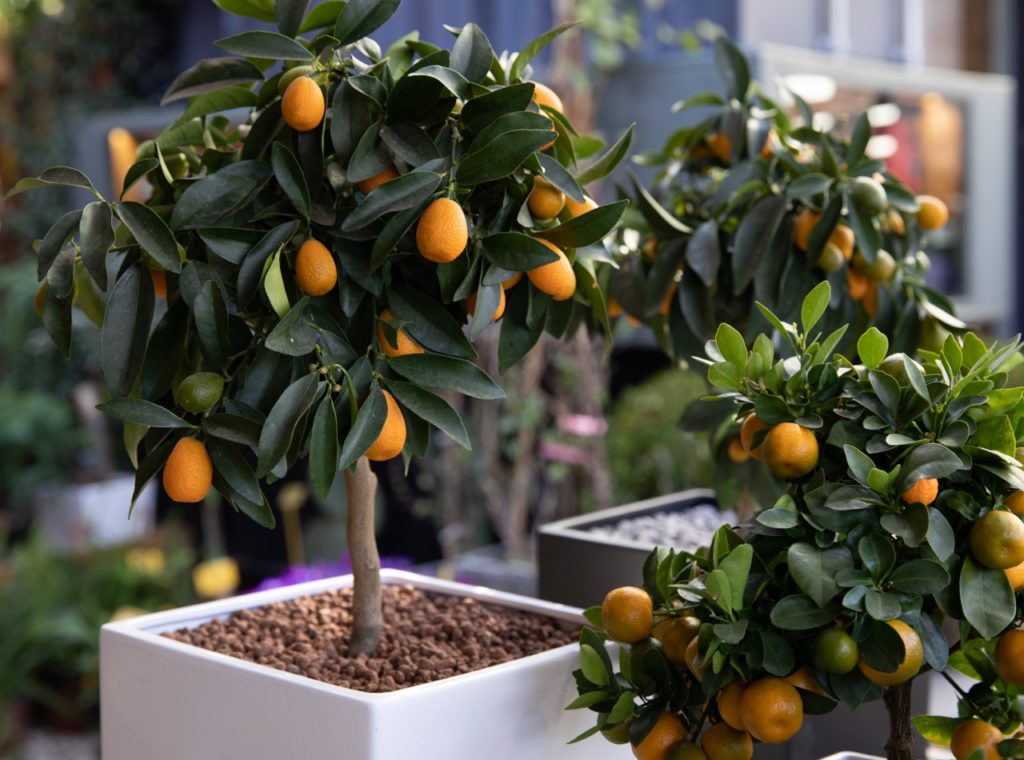
- BOTANICAL NAME: Citrus kumquat
- FOLIAGE TYPE: evergreen
- FLOWERS: white
- FLOWERING SEASON(S): spring / summer
- FRUIT SEASON(S): summer / autumn
- SOIL PREFERENCE: all soil types; any pH
If you’re anything like me, you’ll associate the kumquat with exotic parts of the world and the warm climes they foster.
While that’s true to an extent, kumquat trees are among the hardiest of citrus varieties, so you should be able to coax fruit from an indoor plant within a few years.
A tangy treat with edible skin to boot!2McCulloch, M. (2018b, July 2). What Are Kumquats Good for and How Do You Eat Them? Healthline. Retrieved March 17, 2023, from https://www.healthline.com/nutrition/kumquat
23) Chinese Money Tree
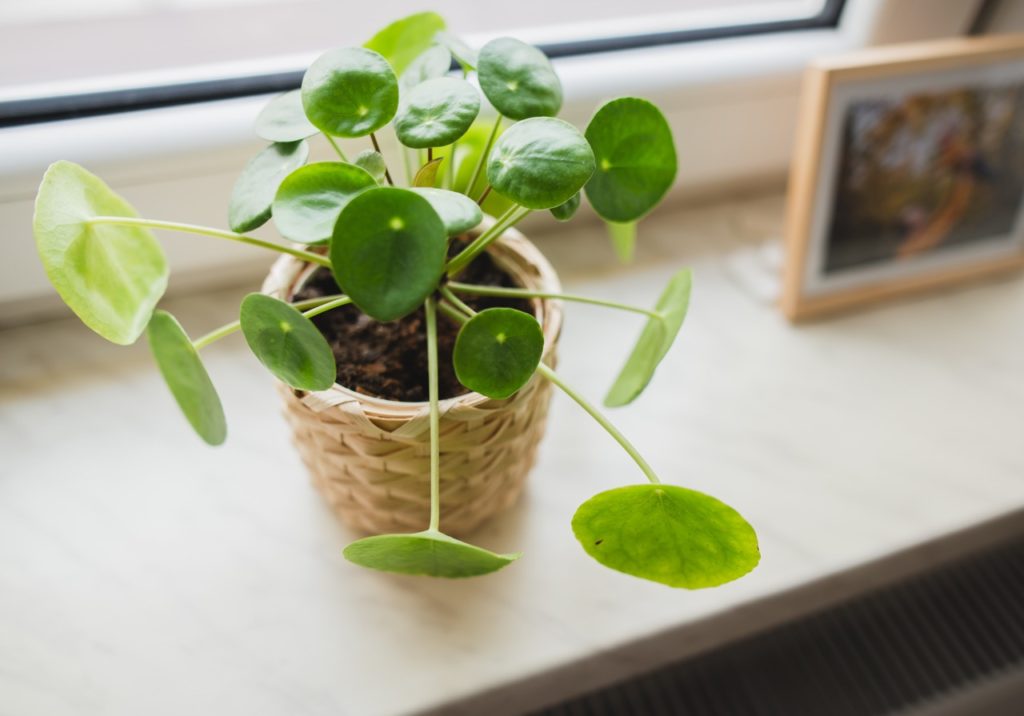
- BOTANICAL NAME: Pilea peperomioides
- FOLIAGE TYPE: evergreen
- FLOWERS: cream, green and pink
- FLOWERING SEASON(S): summer
- SOIL PREFERENCE: chalk or sand; any pH
Like the Jade plant, Chinese money trees are revered as capable of bringing fortune to a home if situated in a southeastern location.
They boast attractive trunks and large, rounded leaves, which are prone to sunburn if exposed to the midday heat for too long, so keep an eye on your tree if you choose to grow this one.
24) Moon Cactus
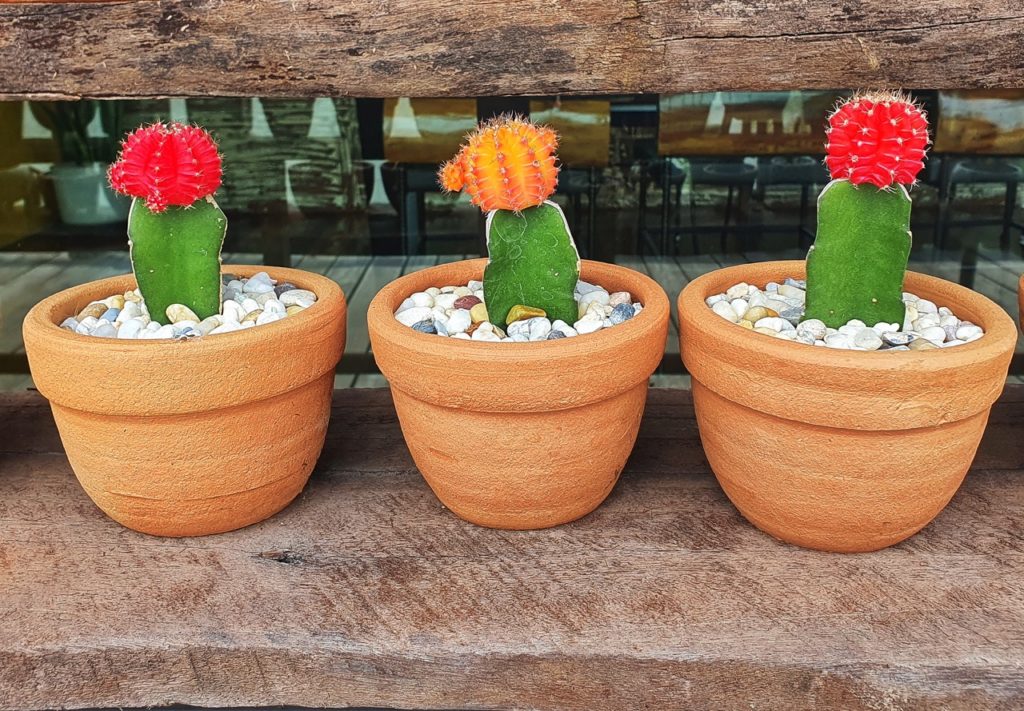
- BOTANICAL NAME: Gymnocalycium mihanovichii
- FOLIAGE TYPE: evergreen
- FLOWERS: pink, green white and yellow
- FLOWERING SEASON(S): spring / summer
- SOIL PREFERENCE: sand; any pH
Moon cacti are invariably one of the most eye-catching specimens in any garden centre or plant nursery display.
With their red globular domes set atop a chunky green spike, they’re a great conversation starter in your home.
Interestingly, the two composite parts are actually separate species that have been grafted together to create a new one.
25) Nivosa Cactus
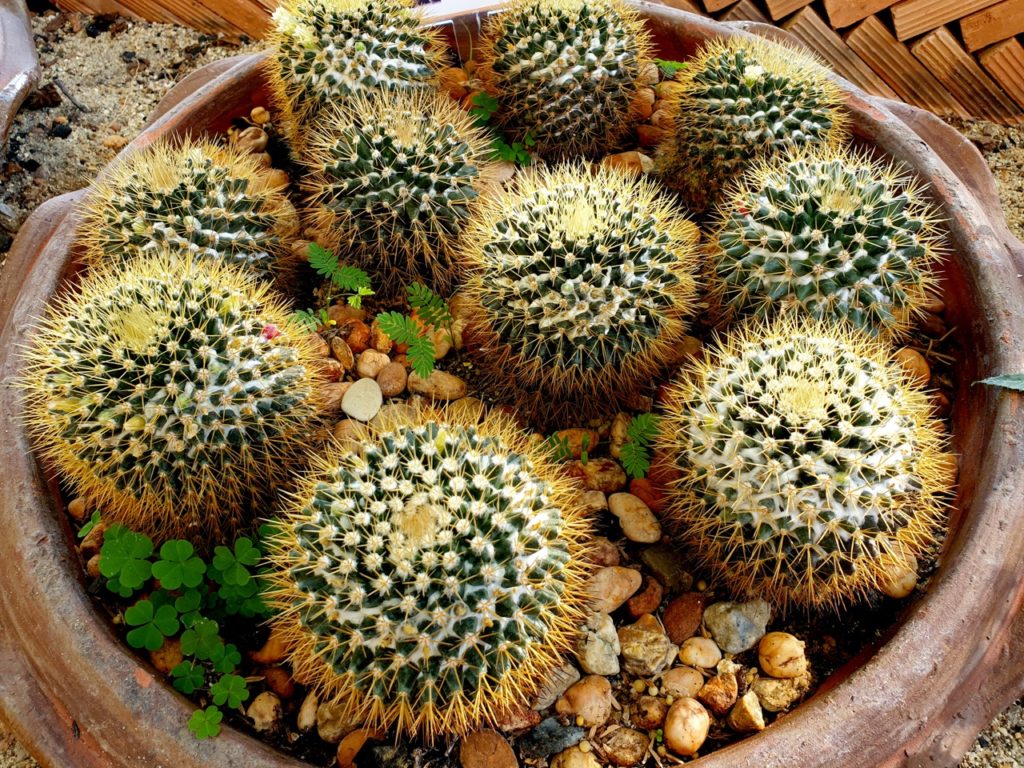
- BOTANICAL NAME: Mammillaria nivosa
- FOLIAGE TYPE: evergreen
- FLOWERS: yellow
- FLOWERING SEASON(S): spring
- SOIL PREFERENCE: sand; any pH
Nivosa features heaped mounds with densely woolly axils and radial spines.
This is a unique plant that will look great in any home.
26) Papyrus
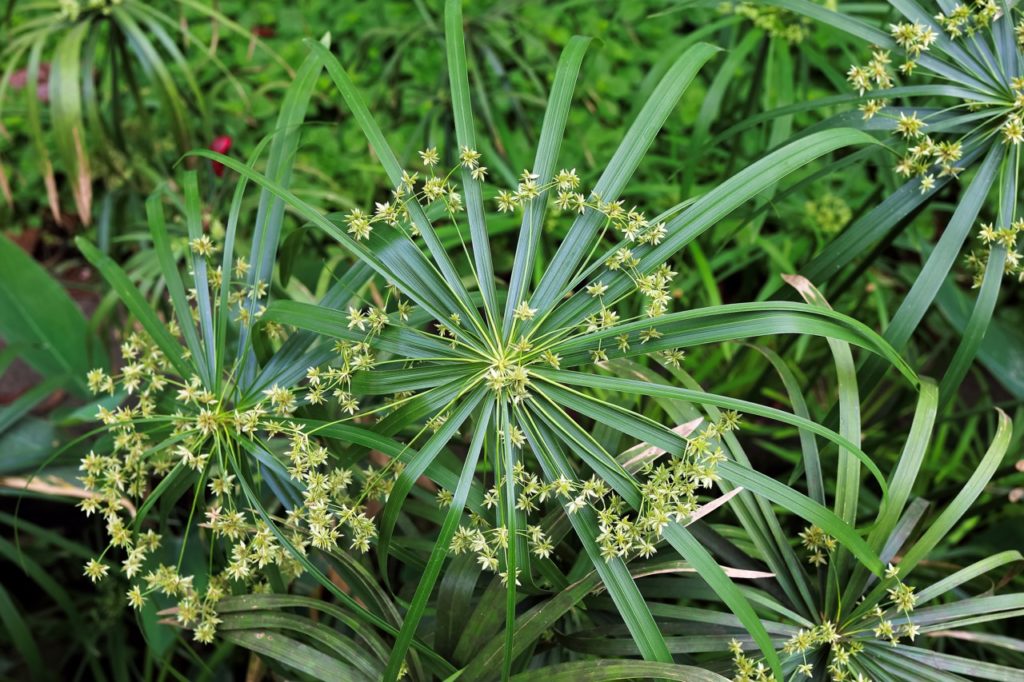
- BOTANICAL NAME: Cyperus papyrus
- FOLIAGE TYPE: evergreen
- FLOWERS: brown
- FLOWERING SEASON(S): summer
- FRUIT SEASON(S): autumn
- SOIL PREFERENCE: all soil types; any pH
Associated with the first writing scrolls from Ancient Egypt, papyrus loves baking heat and plentiful sunshine.
It’ll survive just fine in ambient house temperatures, bringing its lazy sophistication with it, but don’t expect indoor varieties to produce the same flowers as their outdoor counterparts can.
27) Ponytail Palm
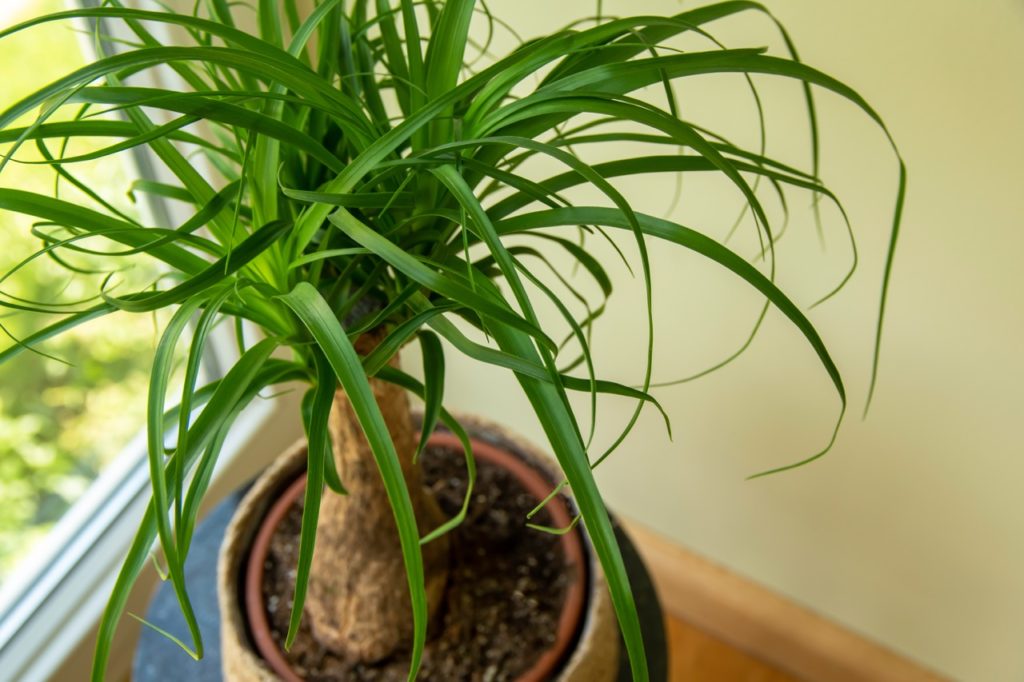
- BOTANICAL NAME: Beaucarnea recurvata
- FOLIAGE TYPE: evergreen
- FLOWERS: white
- FLOWERING SEASON(S): summer
- SOIL PREFERENCE: all soil types; any pH
Although not actually members of the palm family (they belong to the agave tribe and hail from Mexico), ponytail palms do behave in much the same way as their conventional namesakes.
This means that as long as they’re treated to an abundance of direct sunlight, they can tolerate a fair amount of neglect in other areas.
28) Sago Palm

- BOTANICAL NAME: Cycas miquelii
- FOLIAGE TYPE: evergreen
- FLOWERS: brown and yellow
- FLOWERING SEASON(S): summer
- SOIL PREFERENCE: loam; acidic to neutral pH
Another misnomer, the sago palm hails from the cycad family, not the palm one.
Whatever its lineage, it looks like something right out of the Triassic period and will add oodles of character to your home.
With its coconut-like bulb atop a chunky trunk and green, feathery foliage fanning out from the centre, it’s a real show-stopper.
29) String Of Pearls
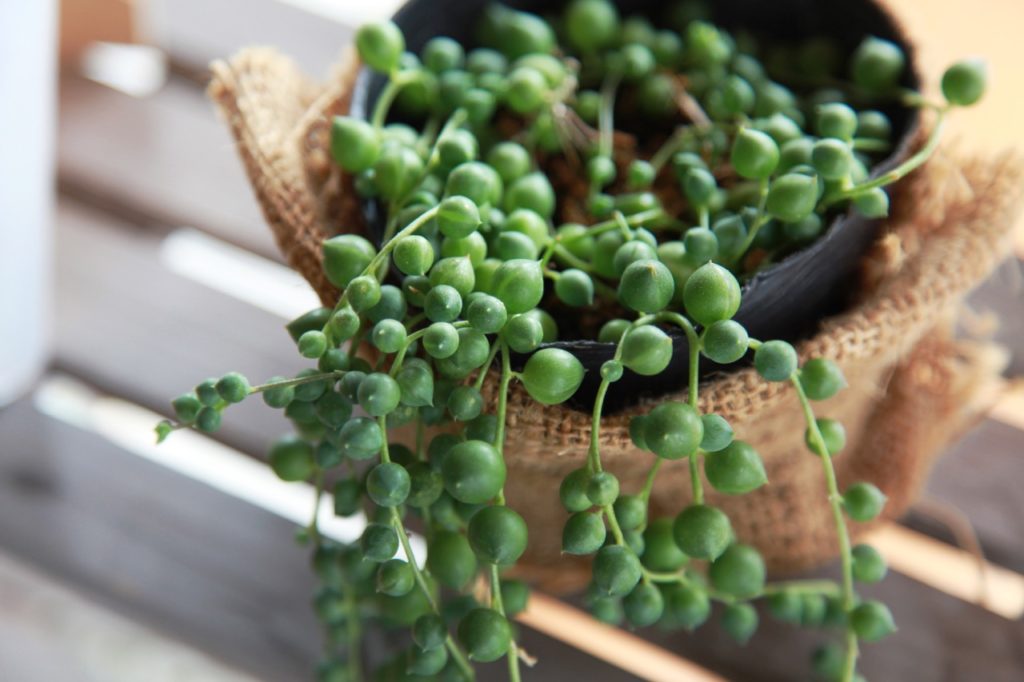
- BOTANICAL NAME: Senecio rowleyanus
- FOLIAGE TYPE: evergreen
- FLOWERS: white and cream
- FLOWERING SEASON(S): summer
- SOIL PREFERENCE: chalk, loam, sand; neutral pH
With cascading stems that teem with orb-shaped leaves, this trailing succulent looks magnificent in a sun-facing hanging basket.
There are plenty of variations on the theme, too, including a string of dolphins and a string of bananas.
As the names suggest, these feature differently shaped leaves but are every bit as attractive.
30) Yucca
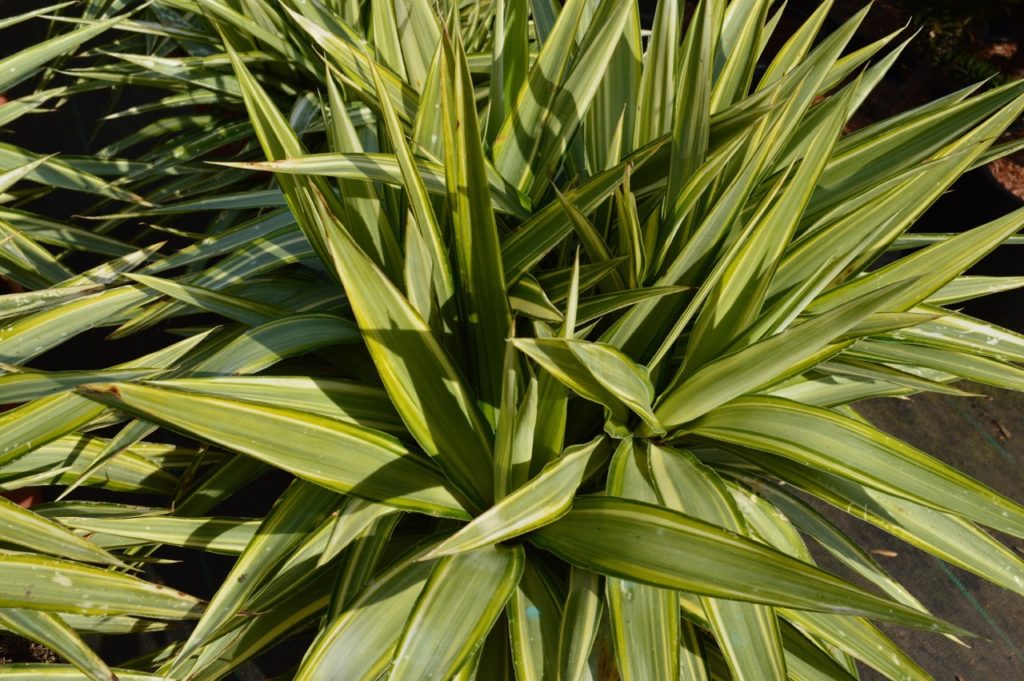
- BOTANICAL NAME: Yucca
- FOLIAGE TYPE: evergreen
- FLOWERS: cream and white
- FLOWERING SEASON(S): summer
- SOIL PREFERENCE: chalk, loam, sand; any pH
Everyone’s favourite starter plant, the yucca can attain spectacular heights in the wild, but indoor specimens will probably not exceed 90cm.
It benefits most from the full sun but will tolerate partial shade, while its other demands are extremely modest – a fortnightly watering should be sufficient throughout the year.
References
- 1Sutton, C. (2019, April 20). Real story of Christ’s crown of thorns. News.com. Retrieved March 17, 2023, from https://www.news.com.au/lifestyle/real-life/news-life/the-real-story-of-jesus-christs-crown-of-thorns/news-story/ec56fd4a5016c533aabcc08e8bcdd72d
- 2McCulloch, M. (2018b, July 2). What Are Kumquats Good for and How Do You Eat Them? Healthline. Retrieved March 17, 2023, from https://www.healthline.com/nutrition/kumquat

